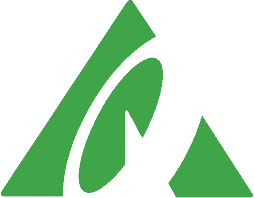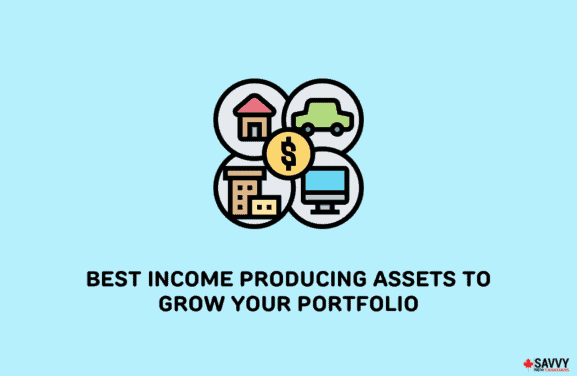Most Canadians would describe themselves as passive or long-term investors. There is nothing wrong with that: most people simply don’t have the time to actively trade the stock market daily. If you work a nine-to-five job, chances are that you can’t also be a day trader.
But there is a growing number of Canadians who are choosing to ditch their day jobs to become day traders. One can certainly learn how to day trade by reading books or watching videos. It is a skill that requires constant education, but once learned, it can provide you with a lucrative income and faster gains than long-term investing.
In this article, I will provide an in-depth introduction to day trading in Canada. I explain the primary differences between day trading and long-term investing, as well as the rules about day trading in Canada and a guide on how to get started.
What is Day Trading?
Day trading has gained popularity in recent years due to the large influx of new traders to the stock market. There has also been an increase in social media personalities that have preached day trading as an easy way to make quick profits.
But what exactly is day trading? It is a method of trading securities or financial assets within a very short time frame and often within the same trading session. For transparency, these assets can include stocks, ETFs, foreign exchange currencies, and even cryptocurrencies.
Before you decide that you want to try day trading, you will need to understand that it is an advanced trading strategy and can result in capital losses. Day trading is inherently riskier than long-term investing, so take some time to educate yourself first.
What is the Difference Between Day Trading and Investing?
The primary difference between day trading and investing is the time frame. Investors can buy and hold assets for years or even decades. They rely on the growth of the company and compound interest or dividend reinvestment to grow their initial investment.
On the contrary, day traders will look for small incremental gains to lock in a quick profit. These gains can happen in a matter of hours or even just a few minutes.
Day traders will study charts and use technical analysis, while long-term investors rely more on fundamental analysis of the underlying company.
When you are a day trader, you typically spend most of the trading day or at least a few hours locking in trades. Long-term investors might log in to their brokerage daily, but for the most part, they are not buying or selling stocks daily.
Related: Best Day Trading Platforms in Canada.
Is Day Trading Legal in Canada?
Yes, day trading is legal in Canada.
Canadian day trading regulations are less strict than in other countries like the United States. For example, in America, there is the Pattern Day Trading rule which flags you as a day trader if you make more than four trades in a week. This affects your taxes and requires you to have at least a $25,000 margin account. This is not so in Canada.
But that is not to say you don’t pay taxes on day trading profits in Canada. You most certainly need to pay taxes on your capital gains, just as you would as a long-term investor. There are differences, though, and I’ll go over these now.
Business Incomes vs. Capital Gains
Reporting taxes is never something people look forward to. Regarding day trading, the CRA often designates day trading profits as business income rather than capital gains. Why is this? The CRA can determine your trading activity from the number of trades you make throughout the year.
If the CRA determines you are a day trader, it will tax your gains as business income which means it is fully taxable. This contrasts with capital gains, where only 50% is taxable. The potential for making more gains is there with day trading, but with that potential comes higher tax rates.
Reporting your Capital Losses in Canada
Another major difference between the United States and Canada is the number of capital losses you can report. Nobody likes to talk about losses, but they can happen to the best of us.
In the United States, you can only report up to $3,000 in capital losses. In Canada, there is no limit; however, they can only be deducted against your capital gains. Remember that only 50% of capital gains are taxable. Capital losses can not be deducted from your employment income which is fully taxable like business income.
How to Day Trade for Beginners in Canada
The thing about day trading in Canada is that anyone can do it. All you need is a brokerage account, some initial funds, and a basic knowledge of how the markets work. You can use any brokerage platform to day trade in Canada, but I prefer to use a discount brokerage.
With day trading, you will execute more transactions than investors, so trading fees can add up. Discount brokerages like Wealthsimple Trade and Questrade can help to alleviate these fees and allow you to keep more of your capital gains.
If you’re ready to begin day trading in Canada, I recommend following this checklist to make sure you have everything in place:
- Sign up for a free new brokerage account at any Canadian discount brokerage
- Add funds to your account once you have signed up
- Learn how to read stock charts with some basic technical analysis
- Practice some trades in a practice or paper account
- Once you have found some success with your day trading strategy, it’s time to use it in the real stock market
Wealthsimple Trade

Trade stocks, ETFs, and options
Excellent trading platform for beginners
Deposit $150+ to get a $25 cash bonus
Transfer fees waived up to $150
Questrade

Trade stocks, ETFs, options, etc.
Get $50 trade credit with $1,000 funding
Low and competitive trading fees
Top platform for advanced traders
Transfer fees waived
Qtrade

Up to $150 sign-up bonus
Trade stocks, ETFs, options, bonds, etc.
Excellent platform for newbies and seasoned investors
Competitive trading fees
Excellent customer service
How Much Money Do You Need to Day Trade in Canada?
There is no limit or minimum requirement on the amount of capital you need to begin day trading in Canada. This is a blessing and a curse for new-day traders.
The positive is you do not need to hold a substantial account balance to be a day trader. But on the negative side, it is easier to liquidate a low account balance if a couple of trades go against you.
The United States has the PDT or Pattern Day Trading rule. This means that if you want to execute four or more trades per week, you will need to have a minimum margin of $25,000 in your account.
Is there a suggested minimum for starting as a day trader in Canada? I would say it is difficult to truly begin day trading without a balance of at least $10,000. I always recommend diversifying trades instead of putting all of your eggs into one basket. But everyone has their trading strategy, so find one that suits your abilities and account balance.
Can I Day Trade in My Tax-Free Savings Account (TFSA)?
Here’s a question I get asked quite often: can I day trade in my TFSA? The wonderful thing about the TFSA is that any dividends or capital gains you make in that account are non-taxable. So naturally, traders are interested in using their TFSA accounts to day trade in Canada.
Unfortunately, the answer is no. You should not day trade inside a TFSA.
While it is true that capital gains are not taxable in your TFSA, the CRA can audit your account. Brokerage platforms typically will not limit you in TFSA trading, but if the CRA notices something suspicious, they can tax you on your gains.
The thing is, the CRA does not have official regulations on this. There is no set amount of trades you can or cannot execute in your TFSA before it is considered day trading. Use your discretion, and be aware that the CRA can tax you for day trading in your TFSA.
What is the Superficial Loss Rule?
One of the more important rules for Canadian day traders to learn is the Superficial Loss rule. This rule states that if a loss is incurred within 30 days of selling a stock, it cannot be reported as a capital loss on your income taxes.
This rule is also known as the 30-day rule because it applies to the 30 days before and after the transaction. This is to prevent traders from selling a stock, waiting for a capital loss, and then immediately re-purchase that stock.
What is the Best Platform for Day Trading in Canada?
When it comes to choosing the best brokerage platform for day trading in Canada, there are plenty of options.
Some traders prefer the safety and reliability of trading through a big bank. I don’t mind trading with your bank’s brokerage, but I do see how trading fees can quickly add up when day trading.
This is why I recommend checking out one of Canada’s many discount brokerages. Everything is online, and when you are ready to make a trade, they often have a discounted rate or no trading fees at all. Saving on trading fees can help you keep more of your profits and gains.
My top Canadian discount brokerage platforms include the aforementioned Wealthsimple Trade, which has zero-commission trading for most Canadian and US stocks. Others, like Questrade or Qtrade, offer discounted trading fees and no restrictions on day trading in Canada.
What are some Risks with Day Trading in Canada?
As with any form of trading or investing, there is certainly a long list of risks with day trading in Canada. Just by the increase in the volume of trades, day trading is deemed riskier than buy-and-hold investing. Any trade can go against you anytime, so you must be prepared to take some lumps and losses.
When day trading, you should ensure that you know exactly how to read the markets and how they behave. Without first practicing or educating yourself, you could quickly find yourself at a loss in your account.
The goal of day trading is to lock in profits and make quick scalp trades. If you hesitate or get too greedy, you could potentially lose your profits at any second.
Greed is one of the biggest problems for new-day traders as they attempt to seek out bigger trades with massive returns. Locking in smaller profits is a safer way to manage risk in your portfolio.
How to Day Trade Options
If you want to take your day trading to the next level, you can add options day trading into your strategy. Do I recommend trading options if you are a new day trader? Not necessarily. This is certainly an advanced trading strategy that can be used to supplement your day trading.
Trading options in Canada is a double-edged sword on most platforms. Some discount brokerages like Wealthsimple Trade do not offer options trading, while others like Questrade have higher fees.
Day trading options on a big bank brokerage can be expensive, and you will typically need to apply for options trading access before getting access.
Day trading options can be an excellent way to hedge against positions. It can also provide a way to see larger returns with a smaller amount of initial capital. I recommend practicing options trading before diving headfirst into the options market with your real money.
In many cases, you are probably better off not getting into options trading at all.
Conclusion: How to Day Trade in Canada
Day trading in Canada can be a lucrative way to make profits on the stock market in a short amount of time.
For obvious reasons, you can turn a profit faster than through long-term buy-and-hold investing. Day trading also comes with a lot of risks, and if a few trades go against you, your account balance could find itself in rough shape.
When trying out any new trading strategy, I always recommend practicing first in a paper account. This will help you realize how difficult it can be to trade in the volatility of the live stock market.
Remember, this article is meant to provide you with an introduction to day trading in Canada. It is not meant to be financial advice, so please make sure you do your research before trying to day trade with your real money.
Day Trading in Canada FAQs
Day trading isn’t something you should just jump into, especially if you are a new trader. First, I recommend signing up for a Canadian discount brokerage. This will help with reducing trading fees, which can add up if you are making several trades per day. I also suggest training in a practice account and reading up on day trading strategies, and even watching videos. Day trading can be a lucrative way to earn a living, but it is also a much riskier way to trade the stock market.
Yes, you can make a living day trading. There are plenty of Canadian traders who earn a living by day trading stocks and other assets. That said, there is a high potential for losses as a day trader if you are unsure of what you are doing.
No, the $25,000 in margin is a day trading rule in the United States. This rule is referred to as the Pattern Day Trading rule and is not in effect in Canada. There is no minimum account requirement to be a day trader in Canada.
You pay taxes on gains earned from day trading activities. You should know that the CRA can also decide to tax your day trading gains as business income rather than at the normal capital gains rate of 50%. If you are wondering whether you can day trade in a non-taxable account like your TFSA, you cannot. While there is no official rule or number of trades you can make in a TFSA, it can be audited by the CRA.
Day trading is an advanced trading strategy and should not be taken lightly. Canadian day traders who do this for a living have years of experience with the stock market. Day trading in Canada requires the ability to read the markets and quickly make accurate trades to capture profits.
You can day trade on any platform in Canada, but I always recommend using a discount brokerage. Platforms like Wealthsimple Trade, Questrade, and QTrade offer lower trading fees and no restrictions for day trading. If I were to choose one, Wealthsimple Trade has zero-commission trades for Canadian traders.
Since there are no real regulations on day trading in Canada, Questrade doesn’t have any set rules for day traders. Questrade does have higher trading fees than other discount brokerages, but you can offset this by signing up as an Active Trader. This lowers trading fees but also comes with a subscription cost. And you should check Questrade’s rules around the use of margin.
Related:







Do you need to open Federal or Provincial INC.? In order to day trade using a prop firm of USA?